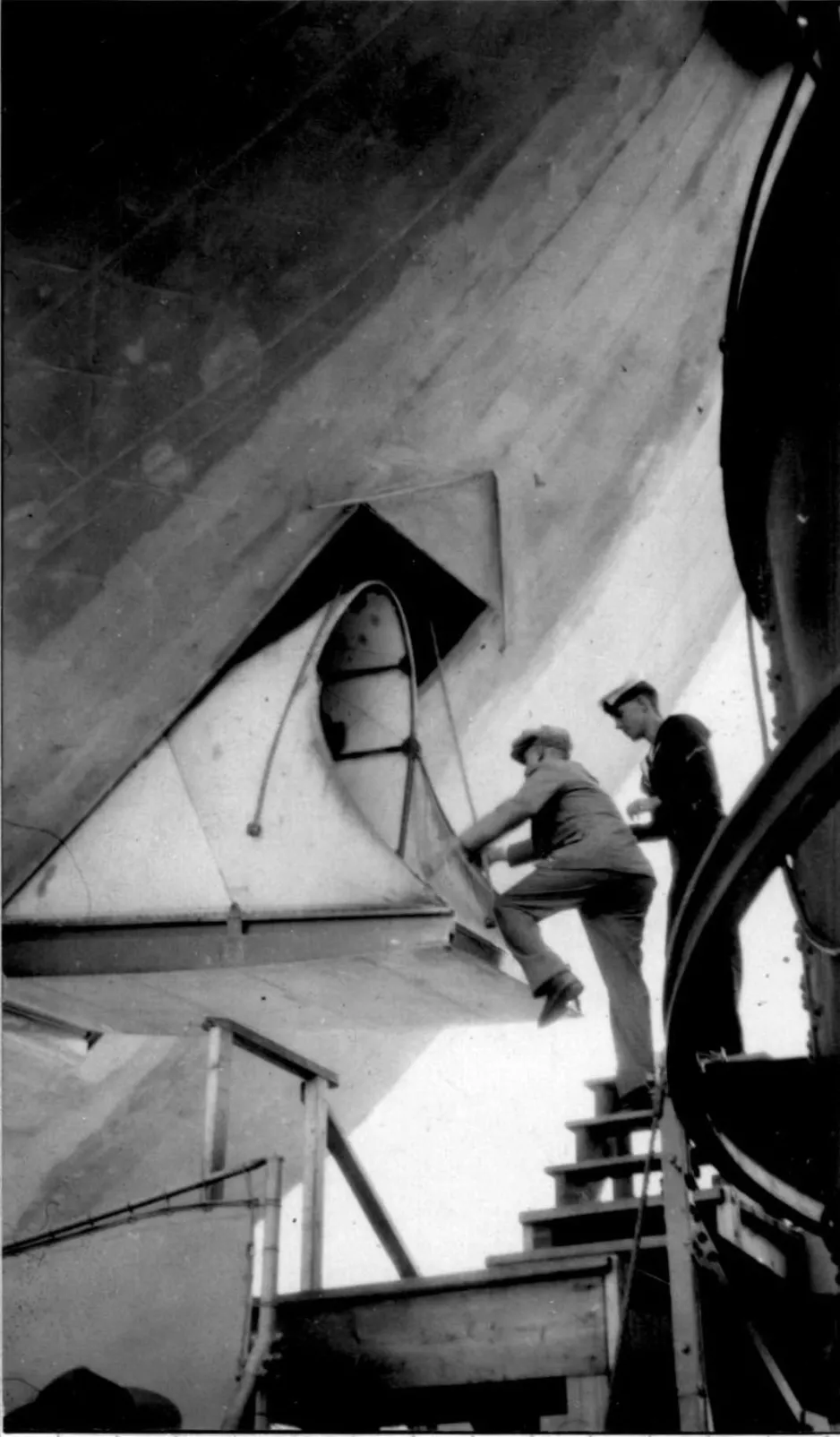It’s a bird, it’s a plane…it was a massive rigid airship called the R-100

It’s Archives Awareness Week 2021! In this article, you’ll get a sneak peek at Ingenium’s collection of 120 photographs relating to the transatlantic voyage of the R-100 — a massive, rigid airship built in the United Kingdom and flown to Canada in 1930.

The R-100 flying over Saint-Hubert, Quebec, in 1930.
On August 1, 1930, thousands of visitors flocked to the newly constructed airfield in Saint-Hubert, Quebec, to get a glimpse of something spectacular: a massive, British-built rigid airship called the R-100.
After a 79-hour flight over the Atlantic Ocean and eastern Canada, the massive craft was finally tethered to the mooring mast that stood 60 m above the ground. At 219 m long, this airship was a media sensation — inspiring newspaper articles, radio broadcasts, and celebrations in Montreal and Toronto.
When most people think of airships, they immediately envision the horrible demise of the Hindenburg in 1937. Prior to this tragedy however, both the military, and civil governments saw great potential in lighter-than-air technology.

History
The first practical rigid airship was developed by retired German military officer Count Ferdinand von Zeppelin between 1898 and 1900. During the first half of the First World War, Germany built around 90 of these cigar-shaped Zeppelins for reconnaissance and bombing. Though their vulnerability to attack made them impractical as bombers, rigid airships were still favoured for passenger air transportation.

The R-100 Airship approaching the mooring tower at Cardington Airfield in Bedfordshire, UK in 1929.
After the war, Germany was barred from having rigid airships as part of the disarmament agreements, but potential for intercontinental transport intrigued a number of people in Europe and the U.S. The UK launched the Imperial Airship Scheme in 1924, with the goal of producing two very large rigid airships — one built by the privately-owned Airship Guarantee Company, owned by Vickers (the R-100), and one by the government-owned Royal Airship Works (the R-101). Each began with the same specifications, though the two crafts ended up very different. A series of design decisions left the R-101 underpowered, and it required significant revisions. The R-100, however, proved itself at handling long distance flights with some adjustments, between 1929 and 1930.

This 1920s image depicts the giant, aluminium alloy structure of the R-100 under construction at Howden, Yorkshire, UK. Equally giant gas cells would later be put inside this structure.
Structure
Rigid airships are lifted by a series of balloon-like gas cells, filled with lighter than air gas; hydrogen was used in most cases because helium was too expensive or unavailable. The cells were contained in a long birdcage-like structure, covered in linen fabric.
A control car housed the controls and the crew, and engine nacelles housed the power source.

The R-100 had space for 100 passengers, including sleeping quarters and a 56-seat dining room.


VIP guests look out from the promenade deck of the R-100 in August 1930.

A Canadian connection
In 1926, Canada signed the Imperial Airship Scheme, agreeing to construct an airship base in a suitable location in eastern Canada. British officials selected Saint-Hubert in August of 1927. Work began on the 60 m mooring mast, which had to contain all of the refuelling and specialized equipment needed to service airships coming to Canada.
The transatlantic flight
The R-100 left Cardington Royal Air Force Base in Britain on July 29, 1930. After a challenging 79-hour flight across the Atlantic and eastern Canada, it moored at the new tower on August 1. Major media coverage and advertising prior to the landing meant that people swarmed the area, and special crowd and traffic control measures were required.

Crowds gathering to see the R-100 rigid airship, moored at Saint-Hubert, Quebec in August 1930.

An official group of officers and Canadian civilian officials gathered at Saint-Hubert's Airport, after the arrival of the R-100 airship in August 1930.

A man entering the R-100 airship in Saint-Hubert, Quebec, in August 1930.
Touring and return to Britain
The R-100 sustained some damage due to bad weather in eastern Canada, and had to be repaired. Following this work, it set out on a publicity flight between August 10 and 11, touring over Ottawa, southern Ontario, the Niagara Peninsula, and Toronto, causing a stir and major traffic jams before returning to Saint-Hubert.
Despite one of the engines being damaged upon mooring once again in Saint-Hubert, coupled with water damage to the electrical system, the return flight to England was successfully completed in 56 hours, between August 13 and 16. Everyone expected the R-100 to return to Canada within a few months.

Disaster and the end of the program
Unfortunately, the R-101, the cousin of the R-100, did not fare as well. On an attempt to fly from Britain to India in October of 1930, it ran into bad weather and scraped the top of a hill. The hydrogen gas burst into flames. Forty-eight crew and passengers were killed, including all of the dignitaries onboard. This signaled the end of the rigid airship program in Britain, and the R-100 would never return to Canada. The airfield at Saint-Hubert however did become the first modern airport in Canada. It remains in use today, as the Montréal Saint-Hubert Longueuil Airport.

Buildings at the airfield, with the R-100 at the mooring tower in the background, in August 1930.
This article has been adapted from the original photo essay, The R.100 in Canada, by Curator of Aviation Renald Fortier, 1999.



















![A block of photographs showing some of the people involved in the bombing of beluga whales in the estuary and gulf of the St. Lawrence River. Anon., “La chasse aux marsouins [sic]. » Le Devoir, 15 August 1929, 6.](/sites/default/files/styles/thumbnail_7/public/2024-09/Le%20Devoir%2015%20aout%201929%20page%206.jpg?h=584f1d27&itok=TppdLItg)


